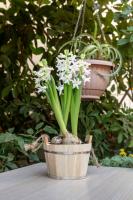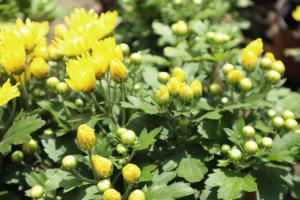How Close to Plant Plum Trees
Plum trees are a popular choice among fruit tree enthusiasts due to their delicious fruit and beautiful blossoms. When planting plum trees, it's important to consider the spacing requirements to ensure they have enough room to grow and produce bountiful harvests. In this article, we will discuss how close to plant plum trees and the factors to consider when deciding on spacing.
Factors to Consider
Before planting plum trees, you should consider several factors that can impact their growth and development. One of the main factors is the type of plum tree you're planting. Some plum tree varieties, like the Dwarf Santa Rosa, require less space than others, as they have a smaller overall size. Additionally, the age of the tree and its growth rate should also be taken into account when planning your planting area. Other factors to consider include soil quality, sunlight exposure, and nearby plants or trees that may compete with your plum trees for nutrients.
Recommended Spacing for Plum Trees
Generally, plum trees should be planted around 15 to 20 feet apart to allow enough room for growth and to ensure each tree receives enough sunlight and nutrients. This spacing distance can also help prevent overcrowding and disease transmission between trees. However, the recommended spacing may vary based on the type of plum tree you're planting and your specific growing conditions. If you're planting a dwarf variety, you may be able to plant trees as close as 10 feet apart. In contrast, larger trees may require more space in-between them to account for their growth and size.
Spacing for High-Density Plantings
If you're interested in implementing high-density planting techniques, you may need to plant your plum trees closer together than the recommended 15-20 feet distance. High-density planting involves planting trees in a closer proximity to optimize land use and improve yields per acre. To achieve this, you may plant plum trees as close as 6 to 10 feet apart. This technique can also be useful if you have a limited amount of growing space, as it allows you to plant more trees in a smaller area.
Conclusion
When deciding how close to plant plum trees, it's essential to consider factors such as the type of plum tree, soil quality, sun exposure, and nearby plants or trees. The recommended spacing for plum trees is around 15-20 feet, but this may vary based on different growing conditions and personal preferences. High-density planting techniques also offer a viable option for maximizing tree yields and optimizing land use. By taking these factors into account, you'll be able to choose the best spacing option for your plum trees, ensuring they thrive and produce delicious fruit for years to come.

 how many times do yo...
how many times do yo... how many planted tre...
how many planted tre... how many pine trees ...
how many pine trees ... how many pecan trees...
how many pecan trees... how many plants comp...
how many plants comp... how many plants can ...
how many plants can ... how many plants and ...
how many plants and ... how many pepper plan...
how many pepper plan...






























